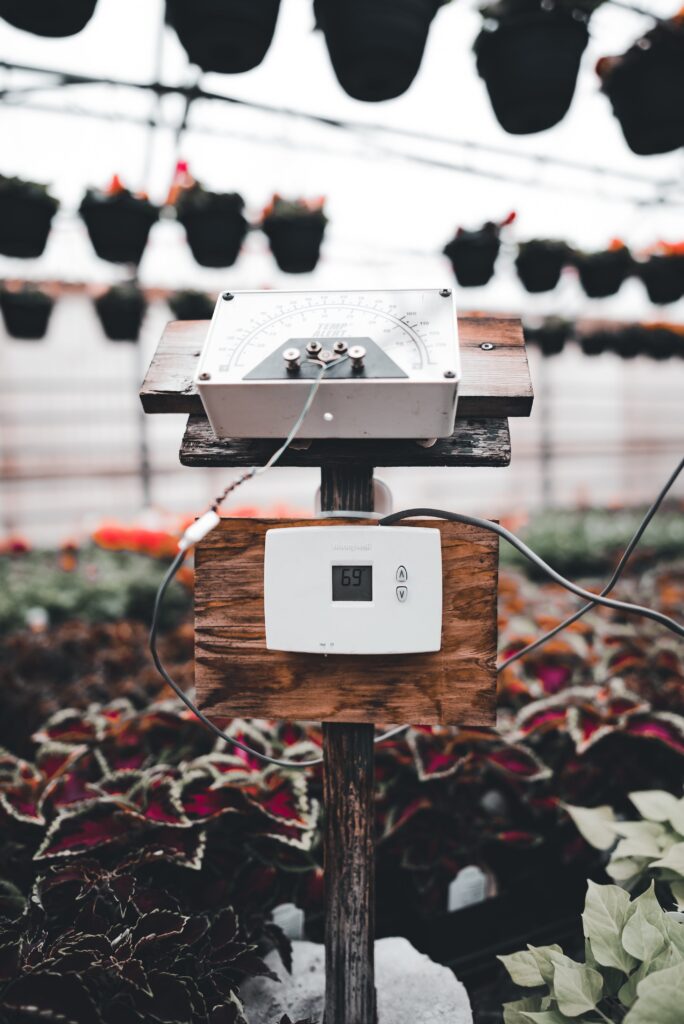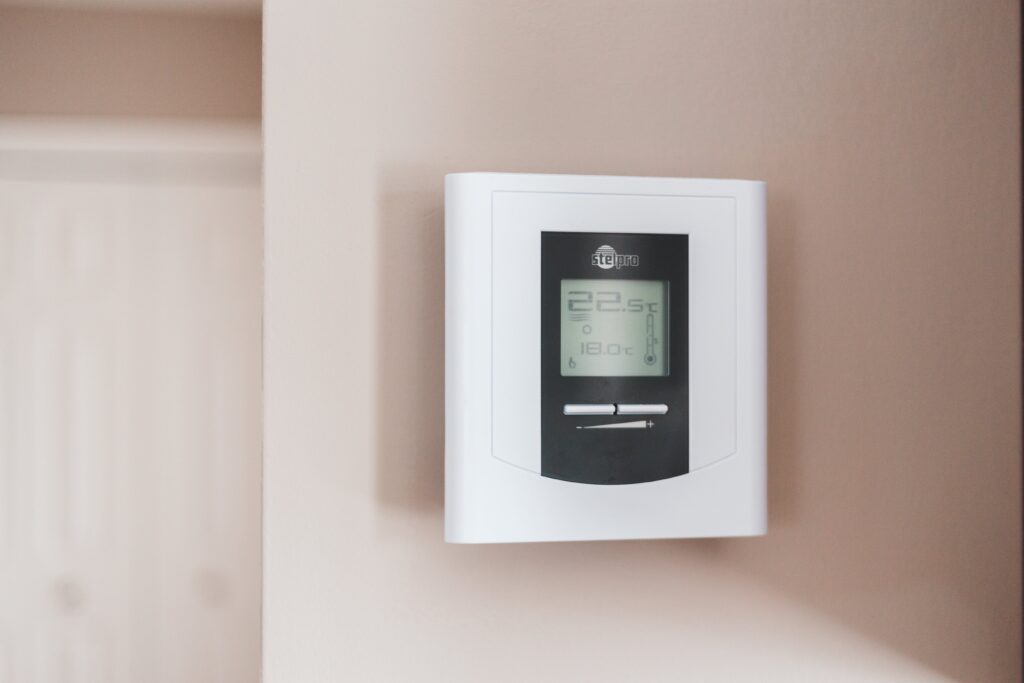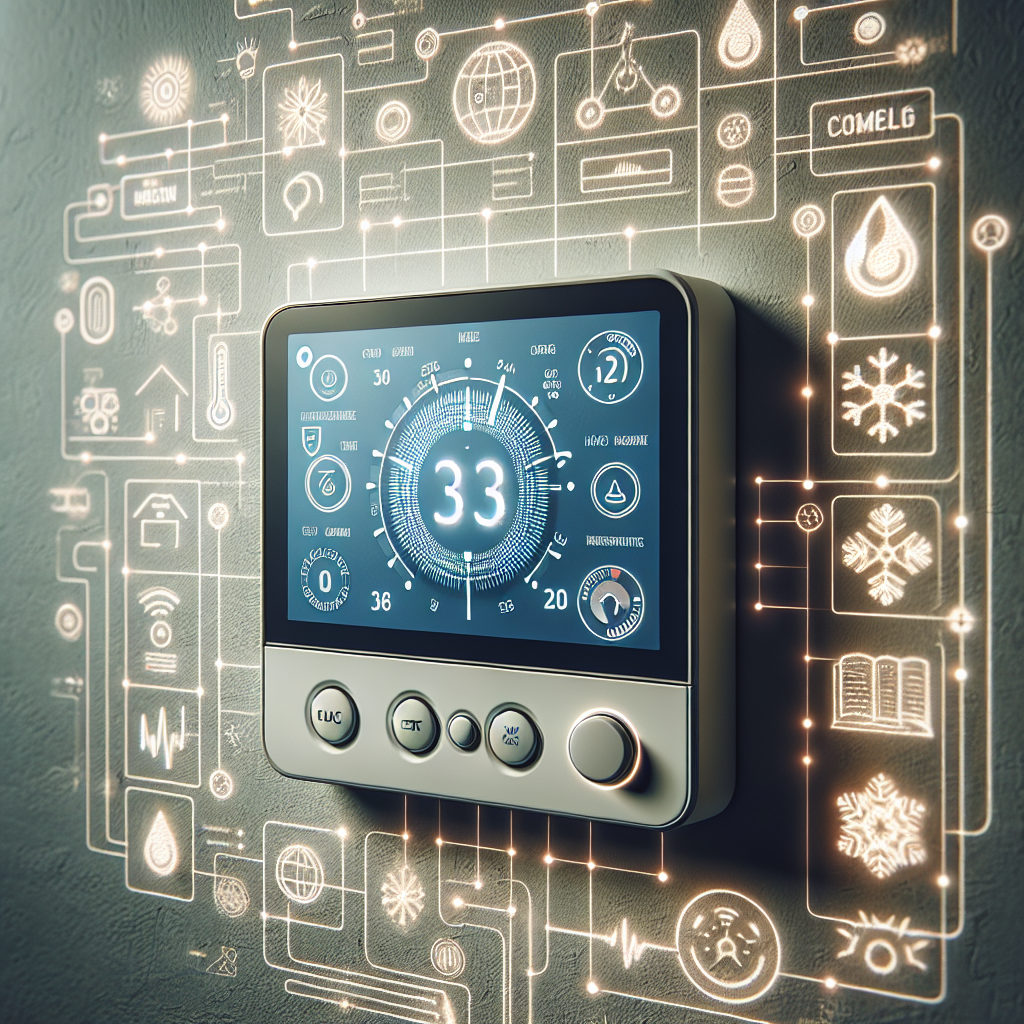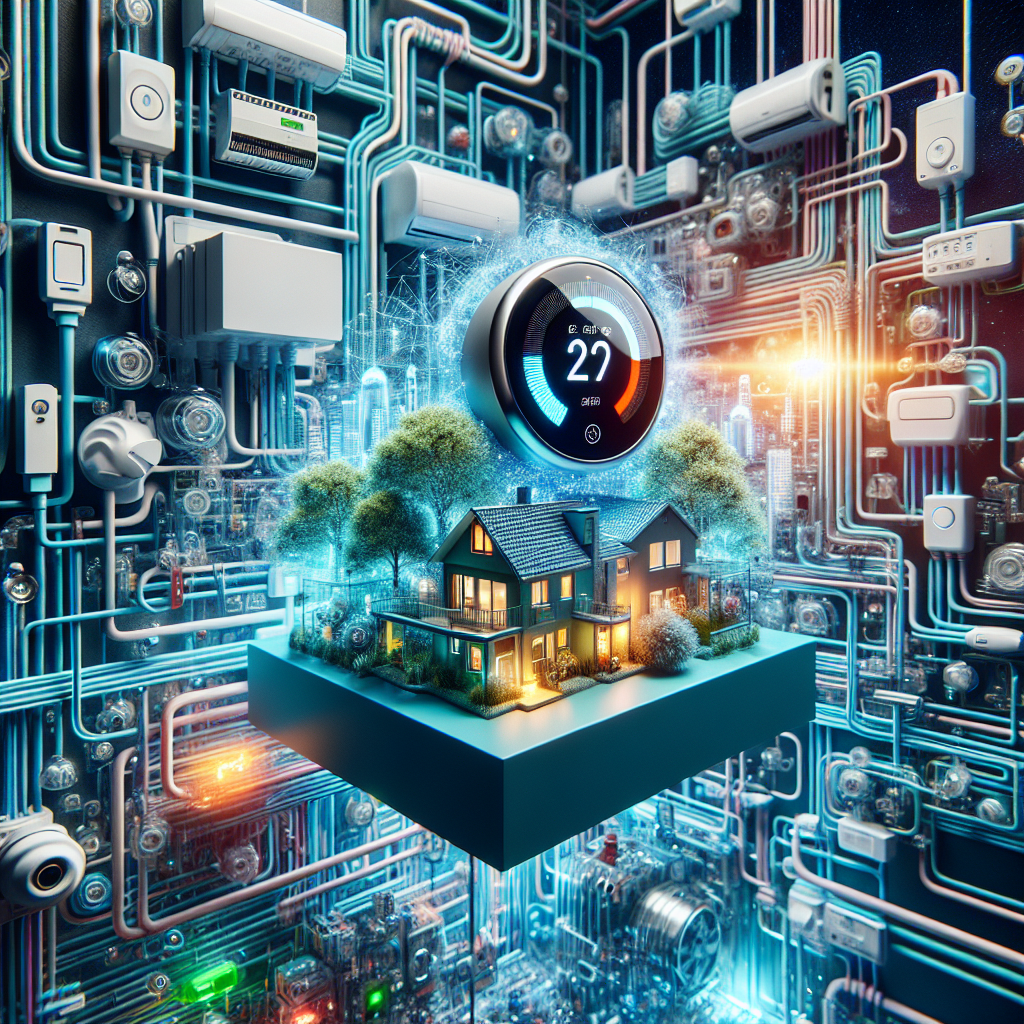Smart thermostats have revolutionized home temperature control, but a burning question remains: can they truly adapt to the diverse heating and cooling systems found in homes? With a wide range of HVAC setups available, homeowners often wonder if these intelligent devices can effectively communicate and optimize performance for their specific needs. In this article, we explore the capabilities of smart thermostats and discover if they can seamlessly integrate with any heating and cooling system, providing ultimate comfort and energy efficiency.

Understanding Smart Thermostats
Smart thermostats have revolutionized the way we control and manage our heating and cooling systems at home. These innovative devices offer a wide range of features and benefits that can enhance both comfort and energy efficiency. In this article, we will dive deep into the world of smart thermostats and explore their functionality and advantages. We will also take a closer look at how these intelligent devices are compatible with various heating and cooling systems.
Definition and Functionality
Smart thermostats are advanced devices that allow users to control and monitor their home’s temperature settings remotely, typically through a smartphone app or a web-based interface. These thermostats go beyond traditional programmable thermostats, offering additional features such as learning capabilities and integration with other smart home devices. They are designed to adapt to your lifestyle and preferences, making it easier to maintain a comfortable indoor environment while optimizing energy usage.
The functionality of smart thermostats varies depending on the model and brand. However, most smart thermostats provide basic features such as temperature adjustment, scheduling, and energy monitoring. Some models also offer advanced features like voice control, occupancy detection, and integration with virtual assistants like Amazon Alexa or Google Assistant. These additional capabilities make it possible for homeowners to have greater control over their HVAC systems, leading to improved comfort and energy savings.
Benefits and Advantages
One of the key benefits of smart thermostats is their ability to save energy and reduce utility bills. By intelligently adjusting the temperature based on occupancy, time of day, and other factors, these devices help minimize wasted energy and keep your home at an optimal temperature. Many smart thermostats also provide energy reports and insights, allowing you to track and analyze your energy consumption and make informed decisions about efficiency improvements.
Another advantage of smart thermostats is the convenience they offer. With remote access via smartphone apps, you can easily control and monitor your home’s temperature settings from anywhere, at any time. Whether you forgot to adjust the thermostat before leaving for work or you want to preheat your home before arriving, smart thermostats make it effortless to manage your HVAC system remotely.
In addition to energy savings and convenience, smart thermostats also contribute to the overall comfort of your home. With features like learning algorithms and occupancy detection, these thermostats can automatically adjust the temperature based on your preferences and habits. This results in a more personalized and comfortable environment without the need for constant manual adjustments.

Compatibility with Various Heating and Cooling Systems
Smart thermostats are designed to be compatible with a wide range of heating and cooling systems, ensuring that homeowners can enjoy the benefits of these devices regardless of their HVAC setup. Let’s take a closer look at the compatibility of smart thermostats with different types of systems.
Types of Heating and Cooling Systems
Before we delve into the compatibility of smart thermostats, it’s important to understand the various types of heating and cooling systems commonly found in homes. These systems include forced air systems, radiant heating systems, heat pump systems, and boiler systems.
Smart Thermostats for Forced Air Systems
Forced air systems are one of the most common types of heating and cooling systems in residential properties. They use a furnace or a heat pump to provide warm or cool air through ducts. Smart thermostats designed for forced air systems, such as the popular Nest or Ecobee models, offer a range of features specifically tailored to these setups.
These smart thermostats are compatible with standard forced air HVAC systems and can easily integrate with existing equipment. They offer functionalities like scheduling, occupancy detection, and energy-saving settings that enhance comfort and efficiency. By adjusting the temperature based on occupancy and preferences, these thermostats ensure that your home is always at the right temperature while minimizing energy waste.

Smart Thermostats for Radiant Heating Systems
Radiant heating systems use hot water or electric coils to heat the floors, walls, or ceilings, providing a comfortable and consistent heat source. While smart thermostats for radiant heating systems are not as common as those for forced air systems, there are still options available.
The compatibility of smart thermostats with radiant heating systems can vary. Some manufacturers offer dedicated thermostats specifically designed for these setups, while others provide compatibility through additional modules or adapters. Before purchasing a smart thermostat for a radiant heating system, it’s crucial to ensure that it is compatible with your specific setup.
Smart Thermostats for Heat Pump Systems
Heat pump systems are a popular choice for both heating and cooling homes efficiently. These systems work by transferring heat between the indoor and outdoor units, providing both warmth and coolness. Smart thermostats for heat pump systems offer features that optimize performance and provide energy savings.
When choosing a smart thermostat for a heat pump system, compatibility is key. It’s essential to check the thermostat’s specifications and ensure that it is designed to work with heat pump setups. Some smart thermostats may even support dual fuel systems, which combine a heat pump with a traditional furnace.
Smart Thermostats for Boiler Systems
Boiler systems, also known as hydronic heating systems, use hot water or steam to distribute heat throughout the home. While smart thermostats for boiler systems are less common than those for forced air or heat pump systems, there are options available.
When considering a smart thermostat for a boiler system, compatibility and adaptability are crucial factors to consider. It’s important to ensure that the thermostat is designed to work with boiler systems and supports the necessary wiring and control requirements.

Compatibility Challenges and Solutions
While smart thermostats aim to be compatible with various heating and cooling systems, certain challenges may arise when it comes to installation and compatibility. Let’s explore some of these challenges and the solutions available.
Wiring and Voltage Variations
One common challenge when installing a smart thermostat is compatibility with existing wiring and voltage systems. Different heating and cooling systems may require different wiring configurations and voltage levels. In some cases, homeowners may need to install a compatibility adapter or converter to ensure the smart thermostat can be properly connected. It’s always recommended to consult the manufacturer’s instructions or seek professional help when dealing with wiring and voltage variations.
Communication Protocols
Smart thermostats use various communication protocols to interact with other devices and systems, such as Wi-Fi, Zigbee, or Z-Wave. It’s essential to ensure that the smart thermostat you choose is compatible with your existing home automation system or smart home hub. Some smart thermostats offer multiple communication options, allowing for increased compatibility with different setups.

Compatibility Adapters and Converters
In some cases, compatibility adapters or converters may be required to bridge the gap between a smart thermostat and a specific heating or cooling system. These adapters help translate the signals and requirements between the two devices, allowing for seamless integration. It’s important to consult the manufacturer’s instructions or seek professional assistance to ensure the correct adapter is selected and installed.
Installation and Setup Process
The installation and setup process for smart thermostats can vary depending on the model and brand. Some homeowners may choose to hire a professional to handle the installation, while others may opt for a do-it-yourself (DIY) approach. Let’s explore the different aspects of the installation and setup process.
Professional Installation vs DIY
When it comes to installing a smart thermostat, homeowners have the option to either hire a professional or install it themselves. Professional installation ensures that the thermostat is correctly wired and configured, minimizing the chance of any complications. On the other hand, a DIY installation can be a cost-effective option for those who are comfortable with the process and have the necessary skills and knowledge.
Wiring and Configuration
Wiring and configuration are crucial steps in the installation process of a smart thermostat. It’s important to follow the manufacturer’s instructions carefully and ensure that the wiring is connected correctly. Depending on the heating and cooling system, additional wiring may be required, such as a common wire (C-wire) for some smart thermostats. Configuration involves connecting the smart thermostat to Wi-Fi, calibrating temperature sensors, and setting up scheduling and preferences.
Syncing with Mobile Devices
Once the smart thermostat is installed and configured, syncing it with mobile devices is a straightforward process. Most smart thermostats have companion apps that can be downloaded onto smartphones or tablets. These apps usually guide users through the syncing process, allowing for remote access and control of the thermostat.
Integration with Smart Home Systems
Smart thermostats offer seamless integration with other smart home devices and systems, enhancing the overall functionality and convenience. Let’s explore some of the integration possibilities.
Compatibility with Home Automation
Smart thermostats can be integrated with existing home automation systems, allowing for centralized control and automation of various devices. This integration enables homeowners to create customized scenes or routines that involve the thermostat, such as adjusting temperature settings when leaving or arriving home.
Voice Control and Integration
Many smart thermostats are compatible with virtual assistants like Amazon Alexa, Google Assistant, or Apple HomeKit. With voice control integration, users can simply give voice commands to adjust the thermostat’s temperature or access other features. This hands-free control adds an extra layer of convenience to managing your home’s temperature.
Energy Management and Reporting
Smart thermostats provide valuable energy management and reporting features that empower homeowners to make informed decisions about their energy consumption. These devices can generate energy reports, provide real-time usage insights, and offer energy-saving tips. By monitoring energy usage and adjusting settings accordingly, users can optimize both comfort and efficiency.
Conclusion
Smart thermostats are an intelligent and efficient solution for managing heating and cooling systems in homes. With their wide range of functionality, compatibility with various heating and cooling systems, and integration with smart home devices, smart thermostats offer numerous benefits and advantages. As technology continues to advance, we can expect even more exciting possibilities and innovations in the realm of smart thermostat technology. With increasing adoption and ongoing advancements, smart thermostats are set to become an integral part of modern homes, contributing to enhanced comfort, energy efficiency, and sustainability.










